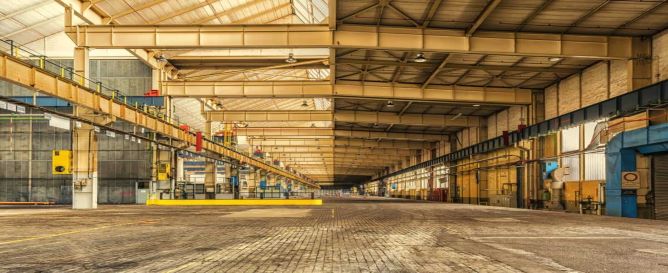Warehouse Temperature Monitoring

HVAC Temperature Monitoring
August 6, 2019
Understanding Refrigerated Trucks and Regulatory Temperature Compliance
October 10, 2019Investing in an industrial warehouse to ensure safe storage of your goods can save costs. It is the best place to store your goods and distribute them when the need arises. Warehousing is an investment that helps create time utility and ensure quality product storage conditions with your own quality standards in play.
Owning a storage facility is an investment you should be cautious before undertaking. You have to bear in mind that there are some of the risks involved in storing goods in any storage facility. Your property may be exposed to theft, fire outbreaks, exploration, and deterioration to name but a few common risks. Significantly, if your warehouses are properly constructed, you will also be able to minimize such risks and save time and money. If you are looking for a means to ensure you safely store your products and maintain their quality, then you can go for warehouse temperature monitoring. It is a great way to store products that need specific environmental conditions.
Days are gone when storing perishable goods like foodstuffs, medical supplies, and pharmaceuticals were a challenge and expensive. Temperature zones vary depending on the size of a warehouse and it is wise to monitor environmental conditions using the best equipment. Constant monitoring is inevitable, as it guarantees that the stored goods are within product-specified conditions and it is easy to notice when any problem that arises.
So, how does temperature monitoring work? You need to purchase and install sensor monitors in your warehouses and wireless sensor monitoring is the best solution to go for. Make sure you pick the best temperature sensors that are reliable, scalable, easy to install, and ones that use a high-quality system to manage, monitor, and cause alarm in the event of temperatures changes.
Wireless temperature sensors connect directly to your network system for easy access and collection to data. The collected data is then sent to the unit. You have to set temperature parameters and graph data using the monitoring software.

In case of any changes in environmental changes in your warehouse, the sensors will send an email or SMS. You will need to install wireless temperature sensor monitors in your storage facility if you want to;
- Prevent damage to good due to environmental problems
- Monitor climate control equipment, air handling units, and compressors in your warehouses
- Have a continuous tracking of the condition of products and
- Identify problem areas in your warehouse and correct cold and hot spots that can damage your perishables.
Even with the best temperature sensors installed in your storeroom to automate the tasks of collecting data and logging, you need to be conforming with set regulatory compliance. Whether you have invested in a warehouse for medical or industrial supplies, you will be subjected to regulatory demands that you must comply with all the time.
With the best temperature monitoring sensors, your equipment will be validated to produce high-quality and consistent goods. These sensors come with Installation Qualification (1Q), Performance Qualification (PQ), and Operational Qualification (OQ). And before you have your wireless sensors installed, ensure they also come with calibration certificates and can be traced to a national standard.
In conclusion the conditions of the products you store in your warehouses are paramount. You need to install the right temperature monitoring systems in your storeroom and save time, maintain quality, increase productivity as well as increase perishability of your products. Have the best monitoring sensors installed in your warehouse hassle-free and stay within regulatory compliance.
